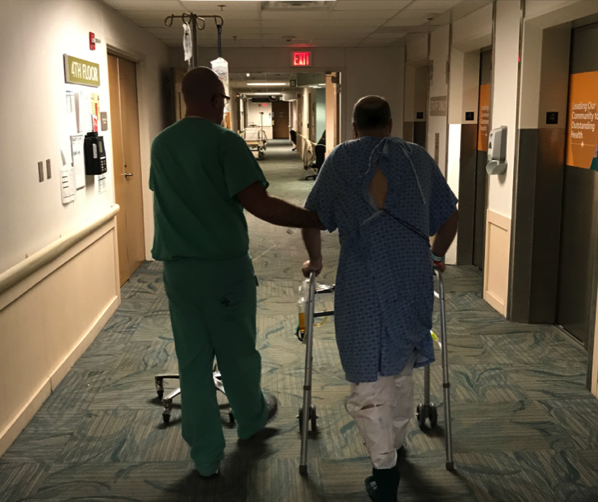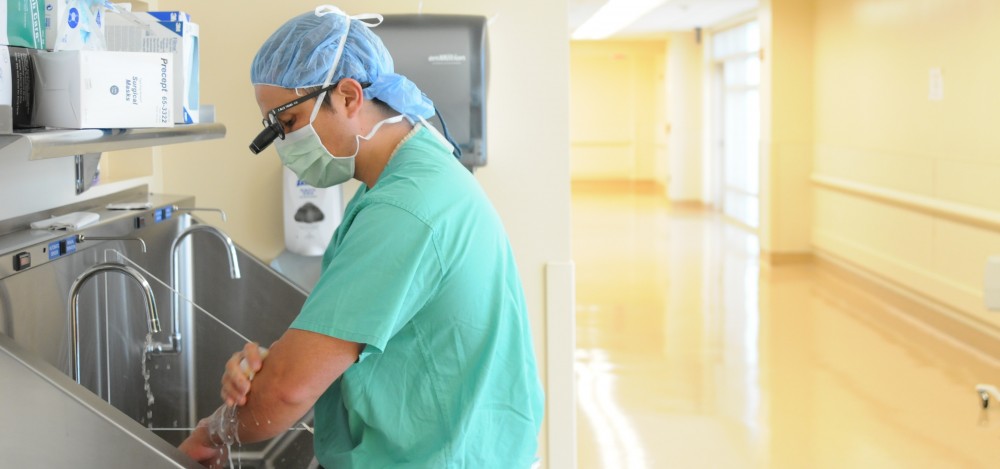I recently did a two-level XLIF on an 83-year-old female who’d been having longstanding back and leg pain. I’ll call her Patsy. The case went very well and when I saw Patsy the next morning she looked great. She admitted that she was having quite a bit of back soreness but her leg pain had resolved. She’d taken hardly any pain medicine overnight and was concerned only with when she was going to be allowed to go home. (As an aside, I’d say that the best patient to undergo lumbar fusion is a female in her late seventies/early eighties. These ladies have endured a lot in their lifetimes and have a level of toughness that just isn’t seen in younger patients. I swear some of them could have these surgeries without anesthesia and not bat an eye!) I told her that she was making the entire process look easy. She said, “You know what Dr. Thomas? How you do is all up here” as she pointed to her head. “I expected it to hurt but I know it’s going to be ok.” Well said Patsy. I’d like to put a picture of your smiling face with that quote on a sign in my waiting room. If only every patient knew how proper expectations play such a pivotal role in outcomes after spine surgery.
Most patients are very happy after their surgery with us, but some just aren’t as happy with their outcome as we’d hope. Sometimes this is because I didn’t execute either the diagnosis or the surgery properly. It happens rarely, thankfully, but it does happen. In many cases, though, a patient’s expectations of the outcome of surgery exceed the actual outcome of the surgery. This is referred to in the spinal surgery literature as the expectation-actuality discrepancy (EAD). Several studies have shown that the larger this discrepancy, the lower the patient satisfaction after spine surgery. Thus, if I can properly manage a patient’s expectations of their postoperative outcomes, they’re more likely to be happy with the results of their surgery.
Again, much of my time in preoperative discussions is spent clarifying what should and should not be expected after surgery. There are some unreasonable expectations that come up time and time again:
- Patients expect that a minimally-invasive surgery isn’t going to hurt. I call this the “Laser Spine Institute Effect”. Patients around here still remember the commercial for the now-defunct Laser Spine Institute showing the patient walking out after spine surgery as if he’d only just had his teeth cleaned. This commercial created the inaccurate expectation that minimally-invasive spine surgeries just don’t hurt. We know from a mountain of literature that the muscle-sparing incisions of the minimally-invasive spinal surgery are associate with much less pain (as well as lower risk of infection, faster return to work, shorter hospital stays but who’s counting?) It’s still going to hurt though. Despite the tiny incision we can still do a lot to your spine. Be ready for some degree of discomfort. Patsy knew she was going to hurt after surgery. She expected it and thus, isn’t going to let it interfere with her recovery.
- Patients expect that with minimally-invasive procedures they’ll get back to full activity right away. This goes hand-in-hand with the previous misconception and is part of the constellation of symptoms of the “Laser Spine Institute Effect”. In a widely cited study on patient expectations after spine surgery, Soroceanu et al (2012) found that the biggest EAD was in patients’ expectations about how soon they could return to exercising. This was a major source of dissatisfaction for patients, even if their surgery was successful by all other measures. Yes, in time, at least in my practice, you’re going to be able to return to your normal level of physical activity after spine surgery. Your body needs to recover after surgery, though, so be patient. Yes…this applies to golf too.
- Patients expect all of their pain to improve after spine surgery. This is a big one. I practice in a growing retirement community so I see lots of patients with, shall we say, older spines. These patients have widespread degenerative disc disease and arthritis throughout their entire spine. This “wear and tear” is inevitable to some degree as patients grow older and contributes to a baseline level of pain and stiffness. Typically, patients present to me with acute pain that is new and distinct from their baseline level of discomfort. Examples of this include an unstable spondylolisthesis at L4/5 causing worsening back and leg pain, or disc space collapse and foraminal stenosis at L5/S1 causing “sciatica”. These are focal problems that are superimposed on the baseline level of painful degenerative changes at other levels in the spine. The goal of surgery is to address the acute problem causing the severe pain (i.e. fusing the L4/5 or L5/S1 levels in the example above), not to fix everything that is wrong with the spine. That would be impossible; I can’t give you a 20-year old spine. Thus, expect your acute pain to be better and to return to your baseline level of discomfort. (You may get lucky and much of that be addressed too, but don’t count on it.)
- Some patients expect that since they’re in a surgeon’s office there must be some procedure I can offer to help alleviate their pain. Sometimes this just isn’t the case; not all painful pathology seen on an MRI can be addressed surgically. So, if surgery won’t help it won’t be offered (the last thing I’d ever want is for a patient to undergo surgery and be no better after surgery than they were before.) That disappoints some people because they’re desperate, but again, my responsibility is to manage expectations. I can’t have a patient expect that surgery is going to help when it’s not going to. (As an aside, unfortunately there are surgeons out there who will prey on desperate patients with unreasonable expectations. I spend a lot of time making sure that the patient understands and accepts that surgery isn’t the answer so that they don’t just leave my office and go somewhere else. Because sooner or later, if a patient is persistent enough, they’ll find a surgeon who’ll operate on them. That’s all I’ll say about that.)

I want you to do really well after surgery. Much of your success depends on my framing your expectations of surgery so that you understand what a reasonable outcome of the surgery should be. This can be challenging because while I want you to fully understand what you’re getting into, I also don’t want to paint such a gloomy picture that you become discouraged heading into surgery. It’s a balancing act between making you believe you’re going to do well and tempering your expectations about the outcome. You’re going to hurt, you’re going to have to lay low for a while and we might not be able to make you feel like you did when you were in your twenties. In the end, though, you’ll be happy with your outcome because you understand what you’re getting into.
Thanks for reading!
J. Alex Thomas, M.D.
Sources:
Soroceanu A, Ching A, Abdu W, McGuire K. Relationship between preoperative expectations, satisfaction, and functional outcomes in patients undergoing lumbar and cervical spine surgery: a multicenter study. Spine (Phila Pa 1976). 2012;37(2):E103-E108.
